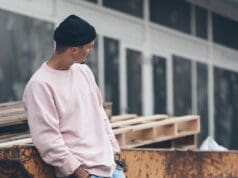No matter which types of exercises you engage in throughout the year, whether daily walks with your dog, hard gym sessions, triathlon preparation, boxing, or other activities, it’s essential to wear the right kind of workout gear.
Wearing suitable clothing will help you be more comfortable when you exercise. It can reduce the risk of overheating or getting cold, and ensure you don’t get so distracted thinking about what you are or aren’t wearing that you can’t concentrate on the tasks at hand.
Avoid giving yourself excuses to give up early or not even start. Wear the right gear to make exercising easier every day. While the fit of garments is a critical element, there’s more to think about before buying. Here are some things to consider as you select products for your workout needs.
Consider Quality Not Just Brand Names
The activewear market is massive and continues to grow. Many celebrities get in on their brands’ interest, the big, well-known fashion names continue to diversify, and many small, independent labels bring something fresh and new to the table. Due to the high supply level, there’s a vast array of quality workout clothing.
As such, it’s wise to pay attention to expensive brand names and examine the quality of products. Just because a well-known brand makes something, it doesn’t mean you’ll get excellent wear and tear out of it. Similarly, brands you may not have heard of before can and often do create high-end offerings that are far superior in quality to many other options.
Whether you’re shopping for warm hoodies for men for the cooler months or compression tights, workout shorts, tees, or other items, find out how and where garments get made. Read online and print reviews, testimonials, social media posts, forum responses, and articles from past users of different brands and specific products. This research will help you understand how comfortable clothing is to wear if it’s easy to clean and maintain and how long it lasts.
Evaluate Materials
One of the key elements affecting the longevity and comfort of workout gear is the material it’s made from. Before buying new items, learn about the materials used and if they’re designed to absorb sweat, for instance, and stay away from your body during movement. Be on the lookout for breathable synthetic materials or natural ones that are more likely to make sweat evaporate so you stay cool and comfortable.
While cotton is often considered an excellent material for clothing, it’s not the best choice for exercise outfits. It absorbs sweat, keeps moisture closer to your skin, and will likely cause issues for you. Also, think twice about clothes made from rubber or plastic, as these usually cause wearers to get hotter. As you analyze clothing, consider whether you can pop pieces into the washing machine or dryer or not, too, and how well materials will work for you if you have skin sensitivities.

Think About What You Need for Different Activity Types
It helps to have multiple workout outfits to choose from according to the weather and the type of exercise you plan to engage in. Different materials and designs can work better for various activities and make training harder and longer.
To get your wardrobe ready for multiple session types, think about how much movement and stretching you’ll do, how hot you’ll get, where you’ll exercise, and more. For example, regular cyclists will want specific cycling shorts with padding for comfort, while those who engage in yoga and Pilates will want looser clothing they can move freely in when getting into different positions. Runners need shorts or compression tights that fit snugly at the waist so they won’t fall.
Make Safety a Factor
Something else to keep top of mind when selecting workout gear is safety. For starters, you need clothing that’s not flammable or isn’t so long or loose that it could get caught in equipment as you move. Think about visibility, too. If you often exercise outdoors, especially at night, you should buy reflective pieces or those made of bright and light colors rather than black, dark gray, brown, or navy.
Consider, too, UV protection. If you’re a long-distance runner, a golfer, surfer, swimmer, or cyclist, for instance, who spends hours exercising outside, you’ll want sun-protective clothes to keep your skin safe.
Don’t just rush out and purchase the first outfits you see or those with the great specials or coolest looks. Take your time locating appropriate workout gear that will wear and last well and give you the protection, comfort, and other benefits you need.
Featured Photo by Ryan Hoffman on Unsplash




